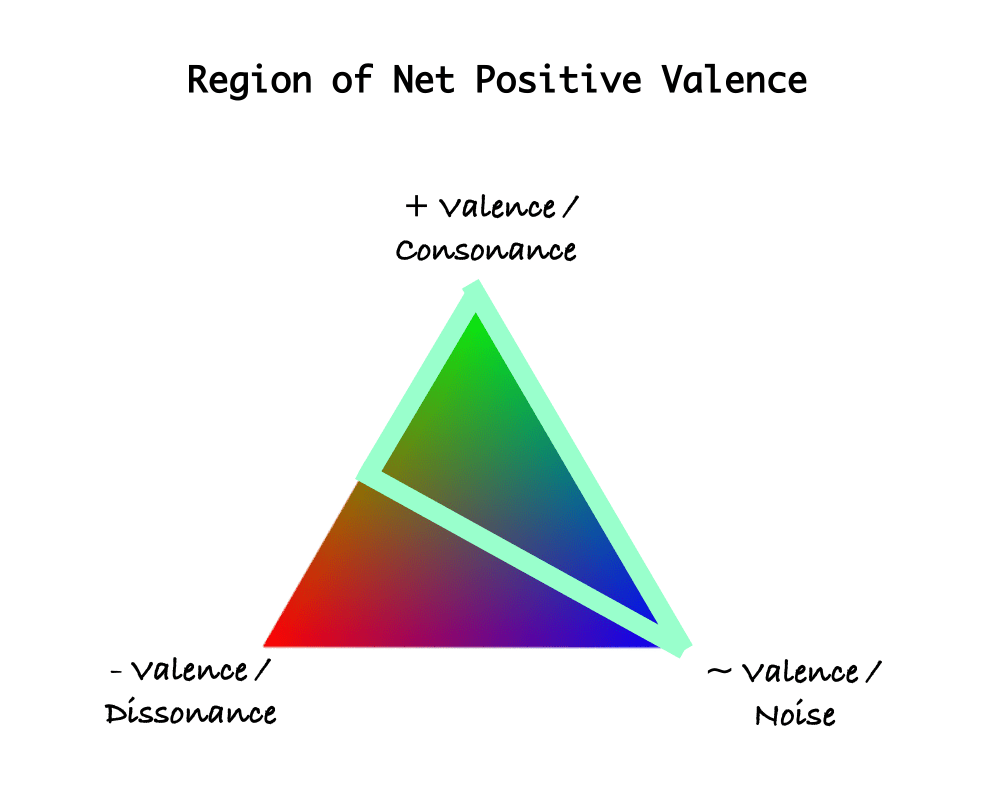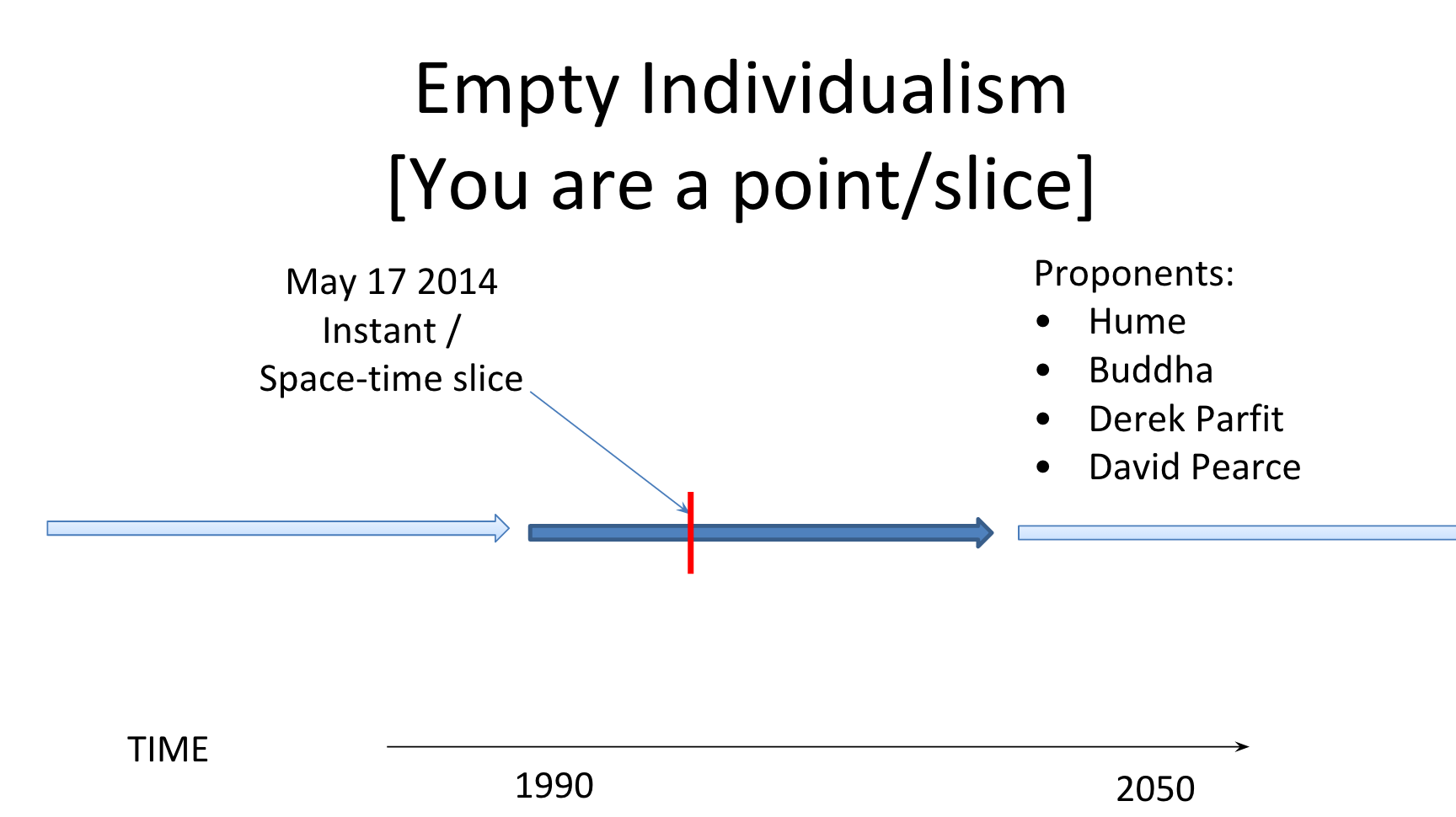It is very easy to answer many of these fundamental biological questions; you just look at the thing!
From Richard Feyman’s talk There’s Plenty of Room at the Bottom (1959)
Introduction
The quote above comes from a lecture Richard Feynman gave, which talked about the challenges and opportunities of studying and interacting with the world on a microscopic scale. Among other things, he touches upon how gaining access to, e.g., good-enough electron microscopes would allow us to answer long-standing questions in biology by just looking at the thing (cf. Seeing Cell Division Like Never Before). Once you start to engage with the phenomenon at a high-enough resolution directly, tackling these questions at the theoretical level would turn out, in retrospect, to be idle armchair speculation.
I think that we can make the case that the philosophy of ethics might be doing something like this at the moment. In other words, it speculates about the nature of value at a theoretical level without engaging with the phenomenon of value at a high resolution. Utilitarianism (whether classical or negative), at least as it is usually formulated, may have background assumptions about the nature of consciousness, personal identity, and valence that a close examination would show to be false (or at least very incomplete). Many criticisms of wireheading, for instance, seem to conflate pleasure and reward (more on this soon), and yet we now know that these are pretty different. Likewise, the repugnant conclusion or the question between total vs. mean utilitarianism are usually discussed using implicit background assumptions about the nature of valence and personal identity. This must stop. We have to look at the thing!
Without further ado, here are some of the key ways in which an enriched understanding of consciousness can inform our ethical theories:
Mixed Valence
One ubiquitous phenomenon that I find is largely neglected in discussions about utilitarianism is that of mixed valence states. Not only is it the case that there are many flavors of pleasure and pain, but it is also the case that most states of consciousness blend pleasurable and painful sensations in complex ways.
In Principia Qualia (Michael Johnson), the valence triangle was introduced. The valence triangle describes the valence of a state of consciousness in terms of its loadings on the three dimensions of negative, positive, and neutral valence. This idea was extended in Quantifying Bliss, which further enriched it by adding a spectral component to each of these dimensions. Let's work with this valence triangle to reason about mixed valence.



To illustrate the relevance of mixed valence states, we can see how it influences policies within the context of negative utilitarianism. Let us say that we agree that there is a ground truth to the total amount of pain and pleasure a system produces. A naïve conception of negative utilitarianism could then be "we should minimize pain." But the pain that exists within an experience that also contains pleasure may matter much less than the pain that exists in an experience without pleasure that "balances it out"!
The naïve conception, would thus, not be able to distinguish between the following two scenarios. In Scenario A we have two persons, one suffering from both an intense headache and an intense stomach ache and the other enjoying both a very pleasant sensation in the head and a very pleasant sensation in the stomach. In Scenario B, we switch it up: one person experiences an intense headache while also a very pleasant sensation in the stomach, and the other way around for the other person.

But if you have ever experienced a very pleasant sensation arise during an otherwise unpleasant experience, you will know how much of a difference it makes. Such a pleasant sensation does not need to blunt the painful sensation directly; the mere presence of enough pleasure makes the overall nature of the experience far more tolerable. How and why this happens is still a mystery (in a future post, we shall share our speculations), but it seems to be an empirical fact that can have extraordinary implications.
For example, a sufficiently advanced meditator might be able to dilute very painful sensations with enough equanimity (itself a high-valence state) or by e.g. generating jhanic sensations (see below). I haven't seen this discussed in academic journals, which I think is an important blind spot.
We don't need to invoke such fancy scenarios to see the reality and importance of mixed valence states. The canonical example that I use to illustrate this phenomenon is: you just broke up with someone (-), are at a concert enjoying excellent music (+), are coming up on weed and alcohol (+), but also need to pee badly (-). We've all been there, haven't we? Suppose you get sufficiently absorbed into the cathartic pleasure of the music and the drugs. In that case, the negative feelings temporarily recede into the background and thus might tilt the experience towards the net positive for a while.
Once you consider the reality of mixed valence states, there is a veritable Cambrian Explosion of possible variants of utilitarianism. For example, suppose you do accept that pleasure can somehow dilute pain within a given moment of experience. In that case, you could posit that there is a "line of hedonic zero" on the valence triangle and anything on one side of it is net positive:


A version of negative utilitarianism we could call within-subject-aggregated-valence negative utilitarianism recognizes any experience in the “Net Positive” region to be perfectly acceptable even though it contains painful sensations.
Alternatively, another version we may call strict negative valence utilitarianism might say that pain, whether or not it is found within an experience with a lot of pleasure, is still nonetheless unacceptable. Here, however, we may still have plenty of room for a civilization animated by information-sensitive gradients of bliss: we can use the gradients that have a mixture of positive and neutral Vedanā for information signaling:

Yet another view, perhaps called within-subject-majoritarian negative valence utilitarianism might say that what makes an experience worth-living and unproblematic is for it to be at least 50% pleasant, regardless of the composition of the other 50%:

Now, I am not going to adjudicate between these views today. For the time being, I am pointing out that actually engaging with the phenomenon at hand (i.e. how valence manifests in reality) radically enriches our conceptions and allows us to notice that most ethics have an impoverished understanding of the phenomenon it comments on. We can change that.
Logarithmic Scales
As argued in Logarithmic Scales of Pleasure and Pain (summary), we think that there is a wide range of evidence that suggests that the intensity of both pleasure and pain follows a long-tail distribution. I will not repeat the arguments here since I've already written about and presented them extensively. I will merely mention that I think that a serious ethical analysis of the current state of affairs ought to include the following states of consciousness (among others) due their outsized moral significance:
On the positive side:
- Temporal lobe epilepsy
- MDMA
- Jhanas
- Good high-dose 5-MeO-DMT trip
On the negative side:
- Cluster Headaches
- Kidney Stones
- Bad high-dose 5-MeO-DMT trip


Valence and Self-Models
One of the claims of QRI is that every experience, no matter how outlandish and unlike our normal everyday human experience, has valence characteristics. An analogy can be made with the notion of physical temperature: every physical object has a temperature, no matter what it is made out of or what its shape is.
Many meditators and psychedelic enthusiasts point out that suffering seems to have something to do with our sense of self. That feelings matter only to the extent that they are happening to someone. Most human experiences have a lot of shared structure, like a central "phenomenal self" that works as an organizing principle for arranging sensations. But experiences without a phenomenal self (or radically altered phenomenal selves) will still have valence characteristics. Ego deaths can be dysphoric or euphoric.
We argue that what matter is actually the overall structure of the experience (cf. valence structuralism). It just so happens that above a certain level of valence, the phenomenal self starts to become an impediment to further bliss. Ultra-pleasant experiences, thus, tend to be selfless! But this does not make them worthless. On the contrary, their intrinsic worth, coming from their positive valence, can go through the roof.
That said, reporting the valence of exotic experiences can be remarkably difficult. This doesn't mean we should give up; instead, we ought to develop new methods, vocabulary, and culture to place these experiences on the same moral footing as our normal everyday life.
For example, the so-called “toroidal state” (on DMT or during a meditative cessation) can have profound valence effects, to the point of making you reconsider the very nature and scope of what matters.

From The Three Doors chapter in Mastering the Core Teachings of the Buddha (Daniel Ingram):
Regardless of the way a specific door manifests, it reveals something completely extraordinary about the relationship between “the watcher” and “the watched” that it would take a very warped, non-Euclidean view of the universe to explain, though I will try shortly. One way or another, these fleeting experiences cannot easily be explained in terms of our normal, four-dimensional experience of space-time, or within our ordinary subject/object experience. […] When the no-self door predominates with suffering as its second aspect, then a very strange thing happens. There may be an image on one side staring back, but even if there isn’t, the universe becomes a toroid (doughnut-shaped), or occasionally a sphere, and the image and this side of the toroid switch places as the toroid universe spins. It may spin sideways (horizontally), or it may spin vertically (like head over heels), and may also feel like a hood of darkness suddenly being pulled over our heads as the whole thing synchronizes and disappears, or like everything twisting out of existence. The rarest no-self/suffering variant is hard to describe, and involves reality becoming like a doughnut whose whole outer edge rotates inwards such as to trade places with its inner edge (the edge that made the hole in the middle) that rotates to the outer edge position, and when they trade places reality vanishes. The spinning includes the whole background of space in all directions. Fruition occurs when the two have switched places and the whole thing vanishes.
I recommend reading the whole chapter for what I consider to be some ultra-trippy phenomenology of surprising ethical relevance (see also: No-Self vs. True Self).
In summary: this all indicates that states of consciousness have valence characteristics independently of the presence, absence, shape, or dynamic of a phenomenal self. If your ethicist is not considering the moral worth of Nirvana, perhaps consider switching to one who does.
Valence and Personal Identity
The solution to the phenomenal binding problem has implications for both personal identity and ethics. If, as I posit, each moment of experience is, in fact, a topological pocket in the fields of physics, then Closed Individualism would seem to be ruled out. Meaning, the standard conception of identity where you start existing when you are born and stop existing when you die would turn out to be a strange evolutionarily adaptive fiction. What really exists is a gigantic field of consciousness subdivided into countless topological pockets. Empty Individualism ("you are just a moment of experience") and Open Individualism ("we are all the same universal consciousness") would both be consistent with the facts, and it might be impossible to decide between them. Yet, I argue that the vast majority of ethical theories have an implicit background assumption of Closed Individualism. So realizing that it is false has major implications.






In particular, if we take the Empty Individualist perspective, it might be easier to defend negative utilitarianism: since each snapshot of experience is a completely separate being, you simply cannot “make it up” to someone who is currently suffering by giving him/her enough happiness in the future. Simply put, that suffering will never be redeemed.
Alternatively, if we take the Open Individualist perspective, we now might have actual grounds to decide between, say, average vs. total utilitarianism. Ultimately, you will be forced to experience everyone and everything. This line of reasoning becomes particularly interesting if you take something like Feynman and Wheeler's One-electron Universe seriously. Here we might even objectively determine an experience's moral worth in terms of "how long the one electron stays trapped inside it". An experience with a huge spatial breadth and one with enormous temporal depth may be equivalent according to this metric: they're just structured differently (cf. Pseudo-Time Arrow). In this account, you are bouncing backward and forwards in time, interfering with yourself forever. The multiverse is the structure emergent from this pattern of self-interference, and it is eternal and immutable in a certain sense. Relative to a small experience, a large experience would keep the one electron trapped for longer. Thus, there would be a strong case to care more about larger and brighter experiences: you'll be there for ages!
If you are bouncing backward and forwards forever in this structure, then perhaps average utilitarianism can be defended. In brief, since you are always somewhere, what matters is not how large the structure is but the shape of its distribution of states.
Valence Structuralism
Finally, if you pay attention to the nature of highly valenced states of consciousness you will notice that they have structural features. For instance, I think the Symmetry Theory of Valence (overview; CDNS) can be experientially probed for oneself by introspecting on the structural features of one's experience when enjoying intense bliss or enduring intense suffering. Rob Burbea's meditation instructions are very well worth reading to get a sense of what I'm talking about. This would seem to matter a lot when it comes e.g. deciding what kind of artificial sentient minds we might want to create—much more on this in the future.
Putting It All together

High-dose DMT experiences are excellent examples of the states of consciousness, parts of reality, that are generally not taken seriously in philosophy (despite their enormous significance), and have many elements that challenge preconceptions about pleasure and pain and inform our understanding of valence. These experiences:
- Tend to involve exotic variants of phenomenal self and a distorted feeling of personal identity
- Have greatly expanded amount of qualia per moment of experience
- Express valence that is typically extremely mixed and extremely intense (with complex dynamic elements that have both high degrees of consonance and dissonance at the same time; see also "competing clusters of coherence")
- And show to a large extent transparent valence: you can use knowledge about the Symmetry Theory of Valence in order to steer the experience towards more blissful configurations by seeking symmetry, harmony, and consonance explicitly.
For a theory of physics to be true, it needs to be able to explain physical phenomena outside of room temperature. Likewise, for an ethical theory to be in any way true, it ought to be able to account for states of consciousness outside of the range of normal human everyday life experiences. DMT states, among others, are examples of non-room-temperature states of consciousness that you can use to test if your theory of ethics generalizes. How do you make sense of experiences with more qualia, mixed valence, exotic phenomenal selves, and valence effects up there in the logarithmic scale? That is what we need to answer if we are serious about ethics.
The future holds much crazier trade-offs than that between Human Flourishing vs Potatoes with Muzak. Already today, I would argue, the facts suggest that we ought to begin recognizing the reality of Hell and the ethical imperative to destroy it. And beyond, our theory of ethics ought to be powerful enough to contend with the outlandish realities of consciousness we are bound to soon encounter.
See also:
- Cube Flipper‘s How to use DMT without going insane
- The Feeling of Value – Sharon Hewitt Rawlette (Utilitarian Podcast)
- Thoughts on the ‘Is-Ought Problem’ from a Qualia Realist Point of View
- Open Individualism and Antinatalism: If God could be killed, it’d be dead already
- Logarithmic Scales of Pleasure and Pain: Rating, Ranking, and Comparing Peak Experiences Suggest the Existence of Long Tails for Bliss and Suffering
Many thanks to Hunter Meyer for comments and edits to this essay.

Great summary post re QRI's work as it relates to EA. I think EA should be paying more attention to this stuff as it seems ripe for generating (and hopefully resolving!) crucial considerations.
I feel like there is some definitional slipping going on when you suggest that a painful experience is less bad when you are also experiencing a pleasurable one at the same time. Rather, it seems to me the right way to describe this situation is that the experience is simply not as painful as it would be otherwise.
To drive this intuition consider S&M play. It's not that the pain of being whipped is just as bad...it literally feels different than being whipped in a different context that simply makes it less painful.
Better yet notice the way opiates work that leaves you aware of the physical sensation of the pain but mind it less. Isn't it just that when we experience a pleasure and pain at the same time the nuerochems created by the pleasure literally blunt the pain much like opiates would.
On a related note I'm a bit uncomfortable about inferring too much about the structure of pain/pleasure based on our evolved willingness to seek it out/endure it and worry that also conflates reward and pleasure but it's a hard problem.
More on jhana meditation as a new cause area.